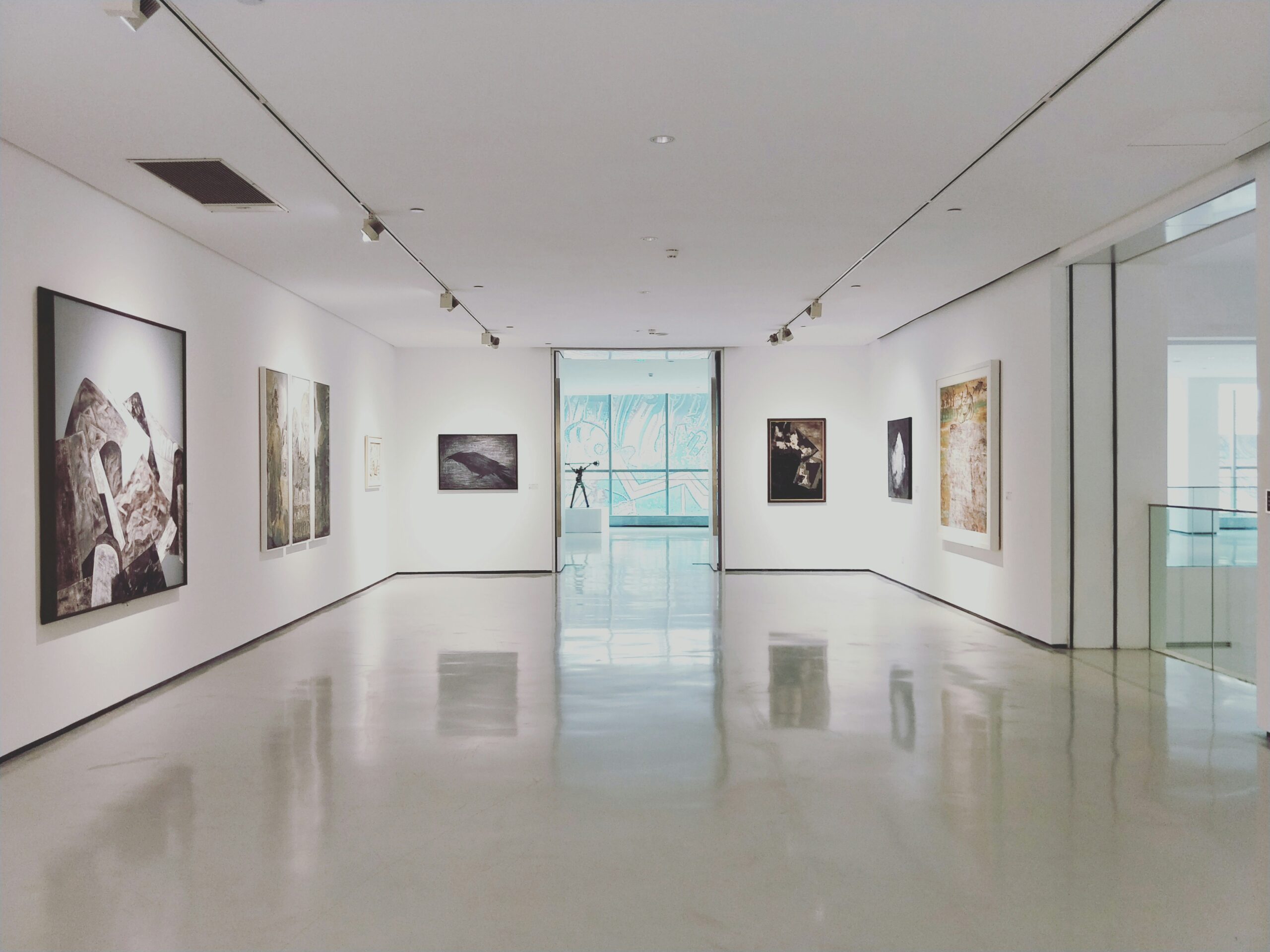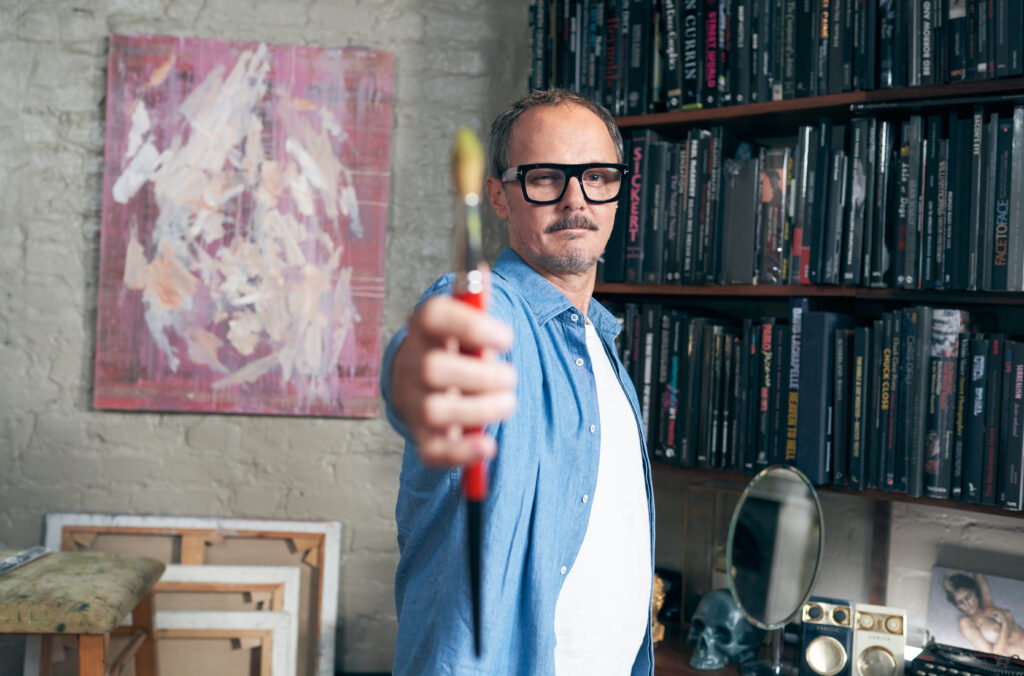
Are you a new artist who wants to develop your own artistic style? Creating a recognisable look and feel for your work can feel like a daunting prospect; however, there are some steps you can take to help you find your art style.
In this article, we look at activities and techniques that can help you discover an individual style – and even better, it can be a thoroughly enjoyable and inspirational process.
What is an artistic style?
Your artistic style is what makes your work yours. It’s what makes a Lowry or a Pollock or an O’Keefe instantly recognisable: the individual use of subjects, colours, forms, textures and space that create a unique whole. There are great commercial advantages to having a signature style; however, it’s about more than that. It’s your individual artistic style that gives your work integrity.
All artists have a natural tendency to head in a certain direction, whether it’s meticulous observational drawing or sweeping abstract landscapes. Finding your artistic style is about following your talents, interests and instincts. It isn’t always easy.
Renowned portrait painter Jonathan Yeo is open about the struggles new artists can have while establishing their own style in his BBC Maestro course. If you’re starting out in an established field, like portraiture, there’s the challenge of “cliché avoidance”. This can create a real feeling of “pressure to find a style which is distinctive” – not easy, especially in a crowded field.
If you love art and have time to play around with techniques and ideas, there’s plenty you can do to start developing your own artistic style.

How to develop an art style
If you’re just starting out as an artist or are further along your journey and wondering how to change your art style, here are some helpful tips you can follow.
1. Be prolific
The best way to discover which styles work for you is simply to keep creating. What do you enjoy? Which media seems to suit you the best? What materials do you like using? Take inspiration from anywhere and everywhere and explore subjects from portraiture to abstract. If you’re at art school, you’ll be doing this anyway, but don’t just stick to the syllabus. Also, don’t feel you have to persevere with a style or technique that you find dull or stressful – your artistic style needs to bring you joy.
2. Look at a lot of art
At the same time, become familiar with others’ styles. Immerse yourself in a world of artistic styles by visiting galleries and exhibitions. Spend time in the art history section of the library leafing through the art monographs. Watch documentaries and read interviews with other artists, or even join an art class if you’re not already studying. Which styles speak to you?
3. Narrow your focus
After this onslaught of art, you’ll probably feel ready to refine your influences. Choose a handful of artists whose work and style you admire. Practise working with these styles: what do you feel comfortable with? What challenges you as an artist? Does it feel like a natural fit for your own skills and talents?
4. Experiment
You’ve played around with different styles – now it’s time to experiment with them. Portrait artist Jonathan Yeo is a big believer in experimentation and explains that even when it doesn’t work, there’s still value in playing with ideas. Experimentation, according to Jonathan, is “always going to be a very useful and often surprising way of discovering new things.”
He gives an example of how experimenting can work successfully. He was taken by how some of his early-stage portraits had a collage-like feel to them, which led him to produce some actual collages. This experiment was “more complex than I thought”, but created a body of work that was new, different and challenging.
5. Embrace serendipity
When you’re experimenting, you might stumble across unexpected styles or techniques – go with them, and see where they take you. Jonathan Yeo describes how when he was starting out, he had to save money by reusing canvases – and discovered that he liked the way this added different aspects to the background. This has evolved into his distinctive style of portraiture:
“The more highly finished the faces, the more important it is to me to leave some bits abstract or a bit wrong, because it stops you getting too comfortable when you look at it.”
6. Follow your interests
Look for inspiration from beyond the art world. If you love swimming, horses, people-watching, architecture or trees – use these as inspiration. If you follow your interests and passions, you can easily find joy in your art. The world around you and the things you love in it will always be a wonderful source of inspiration. As Jonathan Yeo says, “Be open to ideas from unexpected places.”
Jonathan describes himself as a “bit of a geek” who has a “fascination with new technologies”. He’s recently introduced various forms of digital capturing into his work, from 3D scanners to artificial intelligence. You don’t have to stick to art galleries to find subjects that fire your imagination.
7. Evaluate
Pause and reflect on what you’ve done so far in your quest to develop an art style. What have you enjoyed? Which styles have you tried and studied that feel like the best fit? A useful way of evaluating your work so far is to look for recurring elements: if you find you’re increasingly drawn to a certain subject (portraits for example), media or technique, this could be the direction for you. It can be a useful exercise to now spend a week or two focussing solely on that style.
8. Trust your instincts
As an artist, it’s important that you learn how to accept and act on criticism. It’s important to know when to take on feedback and when to politely ignore or reject criticism. This period, when you’re trying to find your own art style, is one of those times when it pays to follow your instincts. Advice is helpful, but don’t feel led by others’ opinions. You need to find your own artistic integrity.
9. Don’t be afraid to change direction
If your instincts are telling you that something isn’t right with the styles you’ve been trying, listen to this voice. Nothing that you’ve done so far will be wasted because it’s all about learning and development. Jonathan Yeo discusses pivots he’s made during his career, such as when he experimented with abstract photography: “I found that a bit of a dead end for me.” If you feel a particular style is leading you to a dead end, turn around now and try a new direction.
10. Keep evolving
Changing direction is a natural part of an artist’s journey. Even when you feel you’ve found your style as an artist, you’ll keep changing and evolving with time. Don’t be afraid of mistakes: as Jonathan Yeo says, “Failure is more useful than success” because it forces you to evaluate.
As a creative person, evolution will come naturally to you. There’ll always be new things that inspire you, or different stories that you want to tell through your art.
Portrait artist Jonathan Yeo discusses his own search for an artistic style in his BBC Maestro course, Portrait Painting. As well as his inspiring accounts of his own artistic development, he also gives the aspiring artist a whole host of invaluable tips.








